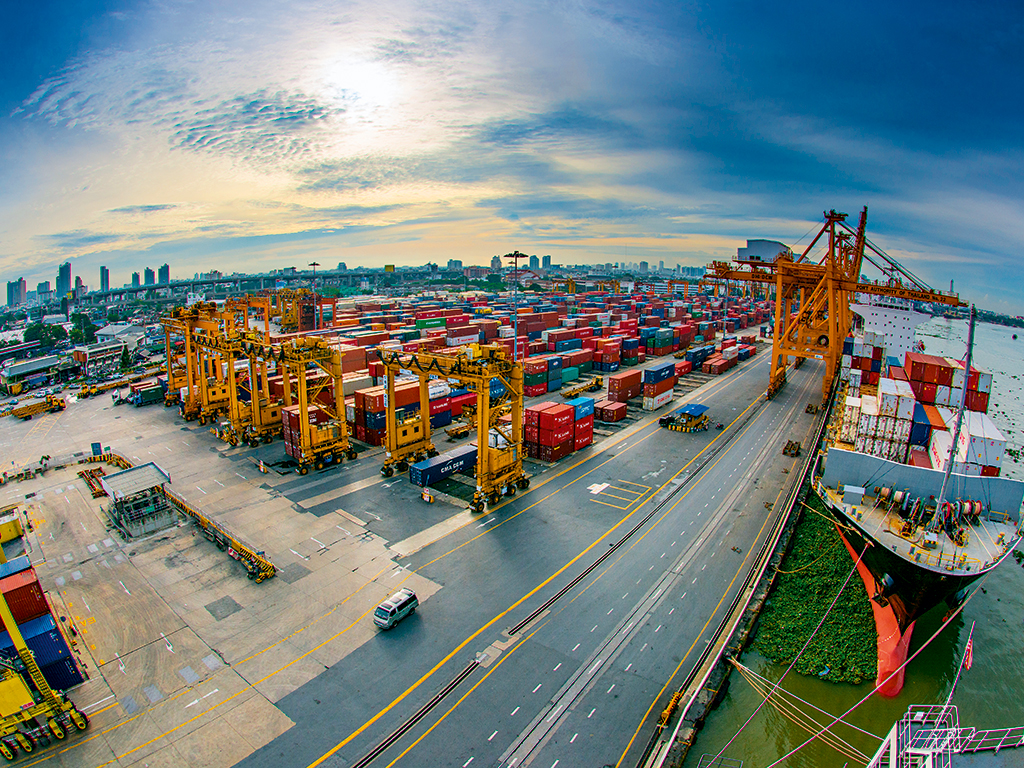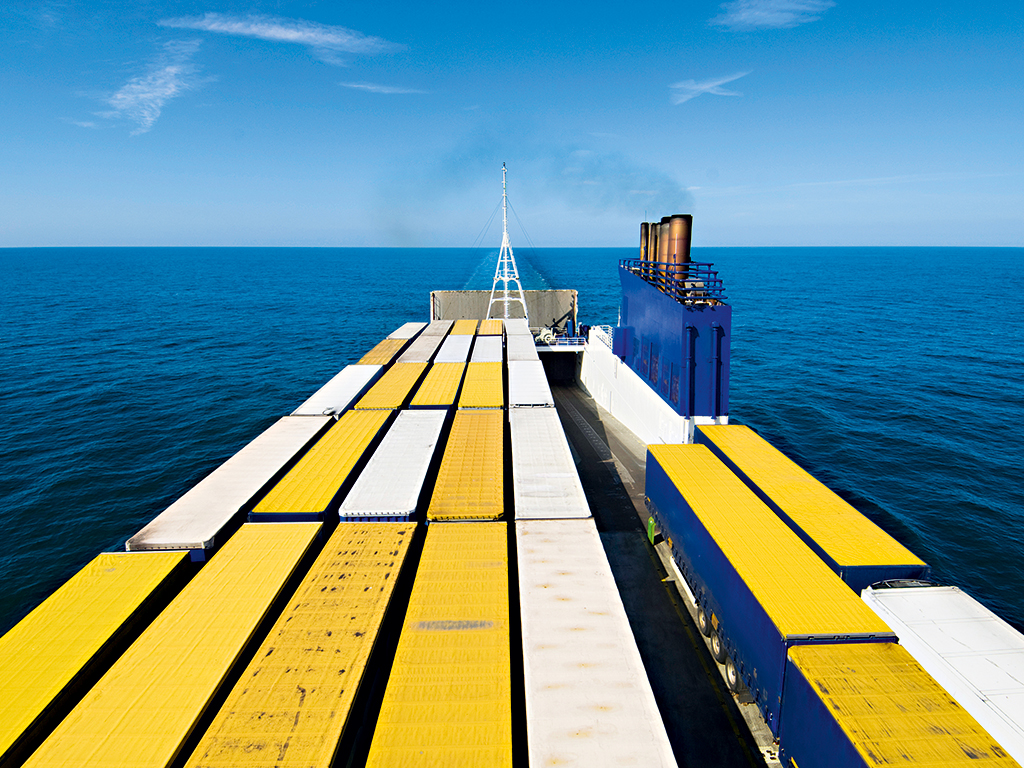Shipping industry sails towards environmentally friendly future
The shipping industry has faced a turbulent few years, thanks to rising costs and creaking infrastructure. However, a focus on eco-friendly cargo ships could give it the newfound efficiencies it needs

Despite being one of the more environmentally friendly means of mass-freight transport, the shipping industry still needs to modernise its operations in order to create a sustainable future
Although regarded as a more environmentally sustainable means of mass-freight transport than many of the alternatives, the global shipping industry has needed to modernise the way it operates for a number of years now. Greener means of moving huge amounts of cargo offer the benefit of lower fuel costs, meaning lower long-term costs for operators and clients.
The industry is considerably more sustainable than the alternatives. Estimates suggest container ships emit roughly 40 times less carbon dioxide than large freight aircraft, and three times less than a large truck. Container ships are 2.5 times more energy efficient than train transport and seven times more than road. However, the industry is still not especially eco-friendly, with large amounts of polluting fuels being pumped into the seas by container ships.
[T]he industry is still not especially eco-friendly, with large amounts of polluting fuels being pumped into the seas by container ships
While improvements have been made at ports to comply with tightened environmental regulations – thereby improving terminal infrastructure and boosting efficiency – the ships themselves have received less attention. A cargo ship has an approximate lifespan of around 26 years. With concerns about their environmental impact having grown over the last decade, many of the mammoth ships that ferry goods across the seas need to be updated.
Existing fleets
The engines of traditional container ships can weigh around 2,300 tonnes and are roughly 1,000 times more powerful than a family car. The ships can stretch to 1,300ft in length, 180ft in width, and may have as many as 21 storeys separating the bridge from the engine room. Such floating beasts are capable of transporting 11,000 20-foot containers.
Unsurprisingly, such colossal ships require a staggering amount of fuel to propel them across the seas, and the fuel used is low-grade bunker fuel – also known as Heavy Fuel Oil – which contains more sulphur than traditional diesel. With consumption rising – in 2001 around 278m tonnes of bunker fuel was consumed, estimates suggest over 500m will be used in 2020 – changes need to be made to these huge cargo ships in order to do less damage to the environment.
The strategy of many shipping firms has been to pump money into researching new technologies, in the hope that newly efficient ships can be added to their fleets. However, with many of their ships still being seaworthy – and having been expensively built in the past – some firms are looking to retrofit cleaner technologies to their older vessels.
Many regulatory bodies are putting forwards new rules that will govern how much fuel these ships can use. The International Maritime Organisation suggested there should be a requirement for marine fuel to reduce its sulphur oxide emissions by 90 percent. Ingmar Loges, the firm’s Global Head of Shipping for International Clients, said in the report: “The drastic decrease in charter rates, increasing bunker prices and stricter IMO regulations mean that shipping companies have to minimise their operating costs while simultaneously ensuring that their ships operate in an environment-friendly manner.”
Eco ships
A number of manufacturers are developing eco versions of their ships, which they hope to persuade the likes of Maersk, Nippon Yusen Kabushiki Kaisha (NYK) and Evergreen Marine to add their fleets. NYK recently unveiled its NYK Super Eco Ship 2030 concept, which it hopes will act as a springboard for innovation across the industry. The design uses solar panels to help propel the ship, although the technology is not quite advanced enough to provide all the necessary energy.
Antti Yrjänäinen, Senior Design Manager at Elomatic, the firm commissioned to develop the ship, says: “The sails are striking, even though they deliver only a small part of the power requirement. The retractable solar cells that cover the container area likewise produce only part of the required energy. However, as they are emission-free energy sources, they are highly significant in reducing the ships’ total emissions.”
While the ship itself is far from being turned into a reality, designer Vittorio Garroni says it should act as a platform for future innovation: “We need a few more years to deepen research on the sun, wind, cells and energy to finalise a real ship that will hopefully be both profitable for business and the environment.”
Japanese firm Eco Marine Power (EMP) develops and markets environmentally friendly power and propulsion systems for ships, and has been researching all manner of renewable energy technologies for the industry. EMP revealed in January that it had created a new ship-sailing technology it called ‘EnergySail’. The technology allows sails to use both wind and solar panels to power the ship. EMP Director Greg Atkinson says: “We have… been encouraged by some very positive feedback that we have received from a number of shipping companies and the increasing interest from companies and organisations around the world in the technologies we are developing.”
In December, Finnish company Wärtsilä announced plans to offer a radical new container ship for US shipping company Crowley Maritime Corporation. The vessel will be powered by liquefied natural gas and has been designed with the new Emission Control Area regulations on the US eastern seaboard in mind.
Rick Zubic, Vice President at VT Halter Marine, the company tasked with building the ships, says: “This vessel design raises the bar for merchant shipping, not only for US flagged ships, but globally. We are proud to be taking this bold step in bringing environmentally viable designs to the market, with Wärtsilä as a key partner.”
Turning dreams into reality
While the research conducted by these companies certainly offers a glimpse of what the future may hold for the shipping industry, transforming concepts into fully functional container vessels is another matter. Freight costs are increasing for companies that already face competition from the airline and rail industries, as well as the rising costs of insurance and security as piracy has increased.
Bringing down energy costs and cutting the levels of emissions will take a large amount of resources. Until a new fleet of ships is unveiled that offers a more efficient mode of transport, the global shipping industry will continue to be attacked for its high level of polluting.














